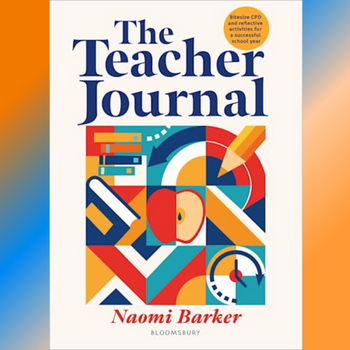Responsive teaching – how to make it work in your classroom

Whether you call it ‘assessment for learning’, ‘formative assessment’, or ‘responsive teaching’, try these ideas for success…

- by Naomi Barker

You have taught what you perceived to be an outstanding lesson.
Pupils were well behaved, engaged with the activities and worked in silence when asked.
To end, you ask some questions to consolidate understanding (and to give yourself that well-deserved pat on the back).
You are met with resounding silence… As the children struggle to answer you begin to challenge your perception of what has really happened this lesson and how you can determine what the next step should be.
If you have experienced a similar scenario, then rest assured that it’s not just you!
Frequently, false indicators or ‘poor proxies’ can mislead to what extent pupils have a true understanding of the taught material.
It is this which is addressed by Harry Fletcher-Wood’s book Responsive Teaching (2018).
At its crux is understanding how the fundamental principles of what is also called ‘assessment for learning’ can be deployed to help ascertain what children have learned, which in turn informs teaching and planning.
This can be particularly challenging when students themselves are not always aware of what they do and don’t know, or will not volunteer this information.
‘Assessment for learning’ or ‘formative assessment’?
Fletcher-Wood’s concept of ‘responsive teaching’ draws on the ideological basis of formative assessment – it involves finding meaningful strategies for checking pupils’ understanding and then reacting accordingly. Not only will this help you to fulfil your professional capacity as the teacher, but it is equally empowering for your class as they are guided to reflect on their learning with the confidence that they will be supported in making progress. The book covers a range of areas and is well worth a read, but for the purpose of this discussion, let’s focus on checking for learning and thinking in the lesson.
Firstly, Fletcher-Wood offers some essential clarification that whichever term you select – assessment for learning, formative assessment, responsive teaching – it needs to be understood as a principle, not a series of techniques or strategies.
By understanding the concepts that underlie these terms, you are then able to translate this knowledge into classroom technique, tailored to the requirements of your pupils’ circumstances.
For example, he flags the need to be hesitant of the claim that you can ascertain ‘learning’ at the end of a lesson, defined as “a permanent change in behaviour or knowledge” and how this should not be understood to equate to ‘performance’ – “a temporary fluctuation in behaviour or knowledge”.
However, you still need to have a sense of students’ knowledge or misunderstandings at the end of each lesson so that you can then plan to respond accordingly next lesson; this is a key principle of responsive teaching – alongside the importance of tracking student understanding during lessons.
Classroom ideas
So, what could the implementation of these principles look like in the classroom? Fletcher-Wood gives a range of examples.
Below is a summary of four that may be of particular interest for further exploration.
- To gauge all pupils’ understanding within a lesson, you might want to consider using a multiple-choice quiz (MCQ).
To ensure these are meaningful they need to be well-designed so that each possible answer is plausible, and to elicit any erroneous understandings including planning in for possible misconceptions.
Answers can be shared via hands, whiteboards or where technology allows, an online platform such as Kahoot.
The latter has the benefit of self-marking providing instant feedback to students and immediate opportunities for re-teaching or clarification.
Some platforms will provide a ‘post-quiz’ report for you to analyse, too. However, do be mindful of anything that requires pupils having a public profile in class.
Learners need to feel comfortable at ‘having a go’ without the risk of being judged by others – they need to feel reassured that this is genuinely a diagnostic learning tool not an additional competition or ‘ranking’.
Assigning all children a number for their online ‘name’ that only you and they know can be one route to alleviating this.
- An ‘exit ticket’ can be an effective strategy for an end-of-lesson activity.
These need to be designed to ensure they cover the key knowledge points of the lesson (usually linked to your goals or learning objective), and should provide an insight into the varying learning responses, including gauging any misunderstandings – general questions such as ‘Do you understand…’ are unlikely to be as effective.
The ticket could include open questions on taught content but also lends itself to an MCQ format.
- Asking questions that require pupils to justify their responses – either written or verbal – is also important for eliciting misunderstandings.
You can then respond to any misconceptions in this lesson or the next, withholding the correct answer so that students can learn what it is through a new exploration of the material.
- Constantly look for opportunities for retrieval practice and assessing prior knowledge and understanding.
Exit tickets can be structured as ‘two-part’ – the opportunity to answer a question from both this lesson and a revision question.
The constant re-visiting of content is essential for consolidating knowledge and understanding – the oft-quoted expression ‘practice makes perfect’ pedagogically does hold some legitimacy!
Diagnostically, retrieval practice also allows you as a teacher to maintain an understanding of students’ recall of prior knowledge, necessary in your curriculum sequencing, particularly where content might need to be revisited again before the introduction of new material.
But what if…
With all this in mind, what happens when you realise that pupils actually haven’t understood the lesson?
First of all, don’t panic or berate yourself! This is a great opportunity to reflect and respond, so you can meet your children’s learning needs.
Moving forward, a well-designed exit ticket at the end of the lesson can help provide a crucial insight into where there are gaps and misunderstandings which need to be addressed in future planning.
Embedding meaningful whole-class feedback techniques such as MCQs within the body of the lesson will help provide feedback on students thinking/reasoning/misconceptions so that patterns can be identified.
Again, in-class teaching can then be responsive in addressing this.
So, is it assessment for learning? Formative assessment? Responsive teaching?
Ultimately the terminology can be a matter of personal choice but understanding the underlying theories behind these is professionally developmental.
When these principles are implemented correctly it empowers both you and your pupils through a collaborative process of knowledge building and, over time, progress with learning and understanding.
What next?
- Ideas: The Learning Scientists website is an excellent starting point to learn more about cognitive science and its place in the classroom. It contains a range of accessible information and resources for teachers, designed by psychological cognitive scientists: learningscientists.org
- Discussion: Throughout Fletcher-Wood’s book, he repeatedly cites the benefits of shared planning with colleagues. For example, designing multiple-choice questions (MCQs) departmentally allows for a myriad of perspectives on subject-specific knowledge and advance understanding of possible misconceptions which need to be clarified. Looking ahead, is there an opportunity to meet with a colleague/s regularly during a PPA to plan exit tickets and MCQs?
- Practice: Want to have a go? Download an activity and reflection sheet here and use it to help structure how you can implement the principles of responsive teaching in the classroom.
Naomi Barker is the author of The Teacher Journal (Bloomsbury). She is assistant headteacher at a school in London and has previously been head of sixth form and lead on PSHCEe, designing an award-winning relationships programme.










